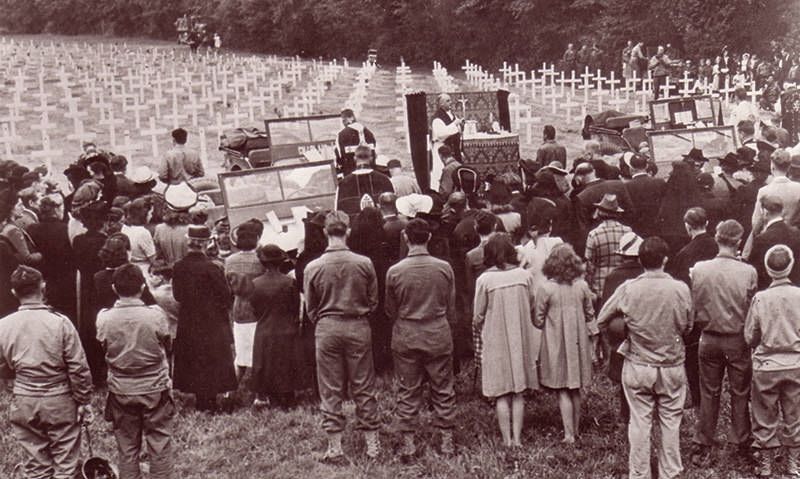
Airborne Museum offers database to learn about U.S. liberators who were first buried in temporary cemeteries.
The first but not final resting place of American Legion founder Theodore Roosevelt, Jr., was Sainte Mere Eglise temporary cemetery No. 2 in Normandy, France. He was among approximately 14,000 U.S. troops buried in and around the town of about 1,500 in the summer of 1944 after the D-Day invasion that broke down the Atlantic Wall and led to Allied victory in World War II.
In recent years, the Airborne Museum in the Normandy community has undergone a massive transformation, opening new pavilions and adding exhibits to tell the story of the German occupation, liberation and American sacrifice. As construction progressed, museum officials discovered three registries, one of which was handwritten, documenting the names and locations of U.S. military personnel temporarily buried there prior to 1948 when they were either repatriated to the United States or moved to the Normandy American Cemetery at Colleville-sur-Mer or the Brittany American Cemetery at St. James. Brig. Gen. Roosevelt Jr., who received the Medal of Honor for his actions on June 6, 1944, at Utah Beach, is buried at the Normandy American Cemetery. He died of a heart attack in Normandy five weeks after the landing.
After the discovery of the listings, the museum began building a database to identify all who were buried in the temporary cemeteries, along with their rank, unit, division, date of death, temporary location and final resting place. The database can be accessed and searched here. Information about all who were buried in two of the three cemeteries is now posted on the site, and those who were buried at the third cemetery, at nearby Blosville – whose names and locations were registered in longhand – will soon be added to the directory.
American Legion Paris Post 1 Commander Ed Canady joined French and U.S. officials in a ceremony April 1 in Ste. Mere-Eglise to launch the site.
Museum Director Magali Mallet says information about those who were buried in the temporary cemeteries is incomplete and encourages families to visit the online database and provide additional information. “We would also like a picture of the soldier’s grave now, after removal to the final location,” she said.
Those who wish to submit information for the database can do so by emailing Eric Belloc, assistant conservationist at the museum at collection@airborne-museum.org.
To learn more about the Airborne Museum, visit www.airborne-museum.org.
- Honor & Remembrance

